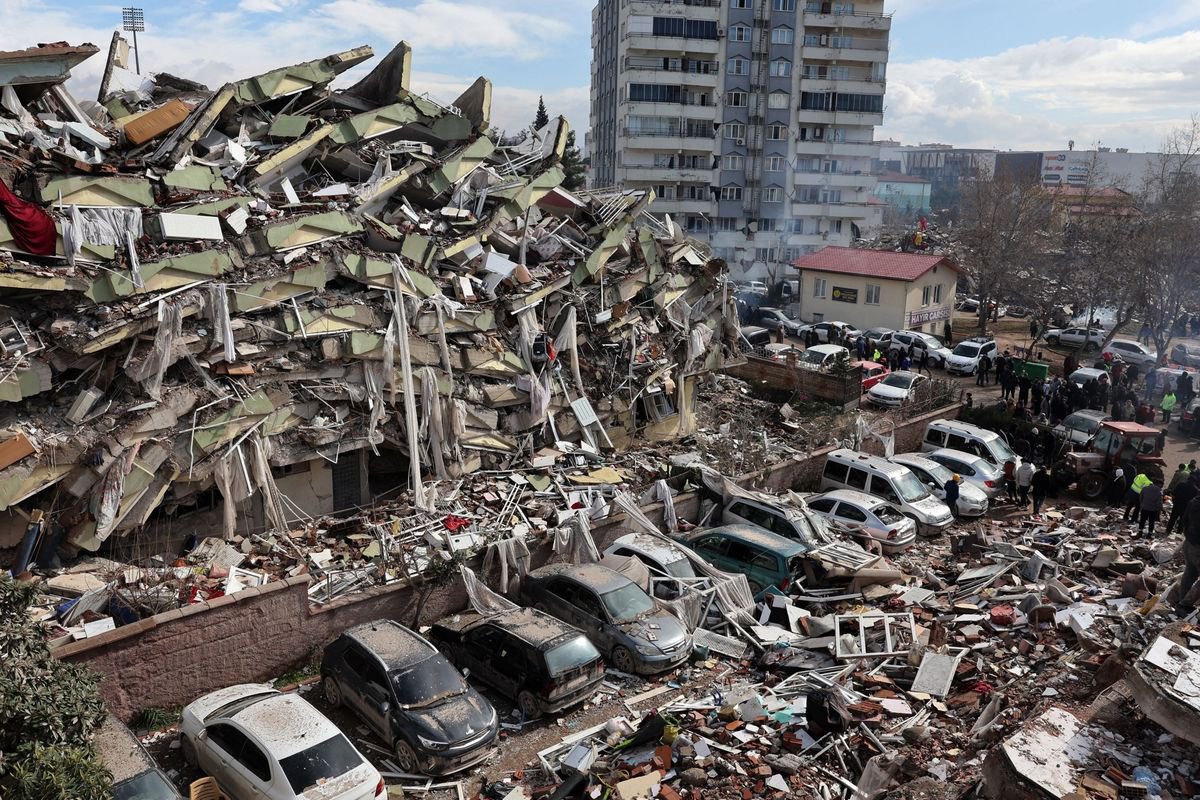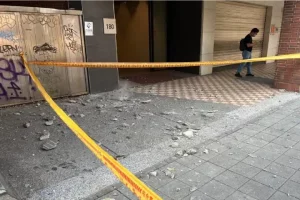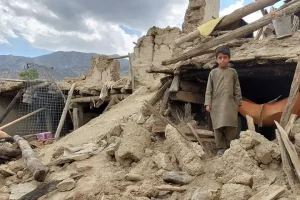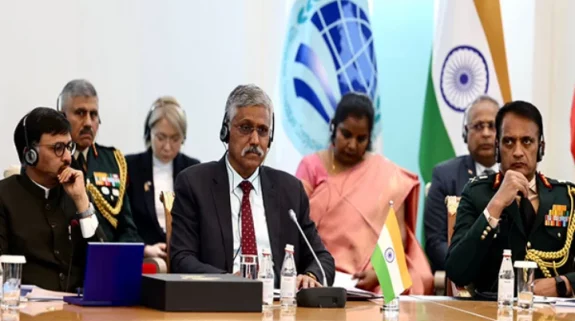The deadly earthquake in Turkey has triggered latent fears about the fate of Himachal Pradesh and its hill towns. The state government, however, says multiple steps are underway to reduce the risks and impact of disasters including earthquakes.
Over a dozen urban towns in Himachal Pradesh, Shimla and McLeodganj included are highly vulnerable to the earthquakes. These fall in seismic zone IV and V, says experts as 70 to 80 percent of buildings are structurally unsafe, located on slopes or violate the building rules of the towns.
Shimla— discovered by the British in 1819 as a small hill settlement and later evolved into a summer Capital of the Empire falls in seismic zone IV. The town established for a population of 25,000 has much exceeded its load capacity. In fact, the population of Shimla has crossed three lakh mark, with additional floating footfall of the tourists and those coming to Shimla for official work.
Over the years, hundreds of trees have been cut by private owners and the government for construction. Most open spaces and storm-water channels are encroached, clogged and commercially sold-out.
“There are already predictions and forecasts about earthquakes of high intensity in Himalayan region. One can imagine the gravity of the tragedy since there is an ill-enforcement of building norms in Shimla. The people have dug and drilled the basements of their multi-storey buildings and sold-out the floors also making the buildings unsafe. Many such spaces have been converted into commercial, residential and parking lots” explains D D Sharma, a retired IAS officer who had served in the State Disaster Management Authority.
The densely populated localities of Shimla where houses are built on 45-to-60-degree slope after cutting down hills, digging under-surface areas to build heavy structures are just waiting for the catastrophe to happen.
But, because of the intervention of National Green Tribunal (NGT) to ban all new constructions in the core areas of Shimla, the government went out of its way to regularise all illegal buildings, and build multi-floors houses.
An eight-storey building at Kacchi-Ghat—an eco-fragile setting of Shimla, had crumbled like a house of cards in 2021, even without the tremors of an earthquake. The building had been built on a loose soil and sliding slope. Apartments had been sold-out to buyers looking for decent living in the town.
Another building—a hotel in Fingask estate — had also collapsed in 1990-91 after monsoon rains, burying the owners’ family. More than 40 percent of Shimla falls in the sinking zone. This also includes the Ridge–iconic flat space that also hosts Shimla’s water storage tank of 10 million litre capacity of water building in 1880.
Landslides, falling trees and buildings caving in is also a common happening in Shimla posing danger to the lives of the people.
“ As some people can’t raise floors due to technical reasons, they have devised a way-out to dig the basements weakening the foundation of the buildings. They pose threat to neighbouring buildings in case of earthquake” Sharma quotes an example from Summerhill, Kasumpti and Lakkar bazar localities.
#WorldPhotographyDay ? An old picture of Lakkar Bazar #Shimla .. pic.twitter.com/ZK7GeqBJXg
— Digital IT Expert…. (@Rajender_Shimla) August 19, 2017
An 11-storey High Court Building will not survive the earthquake, a senior geologist of the town says on condition of anonymity. The Indira Gandhi Medical College Hospital—a premier state institution is vulnerable as is the six-storey Himachal Pradesh secretariat’s Armsdale block.
Says Tikender Singh Parmar,a former deputy Mayor: “ The Britishers were not fools who chose best architecture and used local materials to build some of the landmark buildings in Shimla or elsewhere in Himachal Pradesh hill towns. Railway Broad building on the Mall Road is the best example how earthquake proofing could be done more efficiently. They knew that Shimla falls in the earthquake zone”.
Railway Board was functioning from #shimla before independance.
Railway Board building built in year 1896-1897 had stunning architecture similar to RajMahal.
After Independance it was shifted to capital of #India #DidYouKnow pic.twitter.com/Booe9c77ou— South Western Railway (@SWRRLY) May 28, 2020
In 2017, just before the state assembly elections, the BJP government notified Shimla’s Development Plan to replace the Interim development Plan, which was in force since the 1970s.
Through this, the government proposed allowing constructions even in the banned area, which is green-belt of Shimla. There were major relaxations also proposed for the citizens, who had violated the building norms. The NGT intervened to block the government’s ill-devised move.
The NGT reminded the government agencies that even a mild tremor could spell doom, for the manner in which unregulated constructions were taking place in Shimla.
There are more than 20,000 buildings built in total violation of building norms. There have also been encroached upon government or private land. The highest number of such buildings is in Shimla city and its suburbs.
Seismologists are worried about at least one big Himalayan earthquake that is “overdue in the region” .They also have cautioned that both mountain towns like Shimla as well as cities in the plains like New Delhi are woefully unprepared for a mega quake.
Sudesh Mokhta, Special secretary, State Disaster Management Authority admits that major hill towns in Himachal Pradesh are ill-prepared to meet the threat of earthquakes. Earthquakes do not kill anyone but buildings do.
“ We at the government level have been trying to engage institutions like IIT Mandi, NIT Hamirpur and IIT Roorkee beside National Disaster Management Authority (NDMA) to do retrofitting in the buildings which are at risk as per studies done recently. The number of such buildings is 100 and around 40 have been taken care of. Yet, we can’t say with guarantee that they can withstand earthquakes” he says.
Beside this, the government has started monitoring the big dams, monuments and other landmark buildings. School safety is also part of the exercise. The building code has also been framed in the state and enforcement agencies told to take its care.
In Kangra, McLeodganj and Dharamshala are highly risk prone towns. The 1905 Kangra earthquake which left 20,000 dead is a chilling reminder of the worst disasters.
Senior geologists at Himachal Pradesh Central University,Shahpur (Kangra) in their studies have found that massive constructions, no drainage system and seepage of water from septic tanks have made McLeodganj and Dharamshala a hot spot of sinking.
Reports say the National Disaster Management Authority (NDMA) published an Earthquake Disaster Risk Index (Edri) report in 2019 which looked specifically at 50 cities including the metros and cities in seismic zones IV and V (the two most active regions in India).
Himachal Pradesh High Court, in its latest order, had made it mandatory on all panchayats to prepare their own plans for allowing future constructions/ buildings. ” This will have some checks on buildings coming-up haphazardly in new towns and sub-urban areas” feels Devesh Kumar, Principal Secretary , Urban Development , Town and Country Planning.
Also Read: India’s Operation Dost shifts gears as quake death toll in Turkiye and Syria crosses 15,000




















